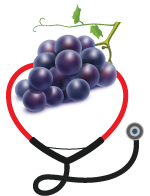Wine grapes are a specific variety of grape that is cultivated and used for winemaking. [1]
Unlike table grapes, which are primarily consumed as fresh fruit, wine grapes have specific characteristics that make them ideal for producing wine.
They possess a unique balance of sugars, acidity, and flavors that contribute to the complexity and quality of the resulting wines.
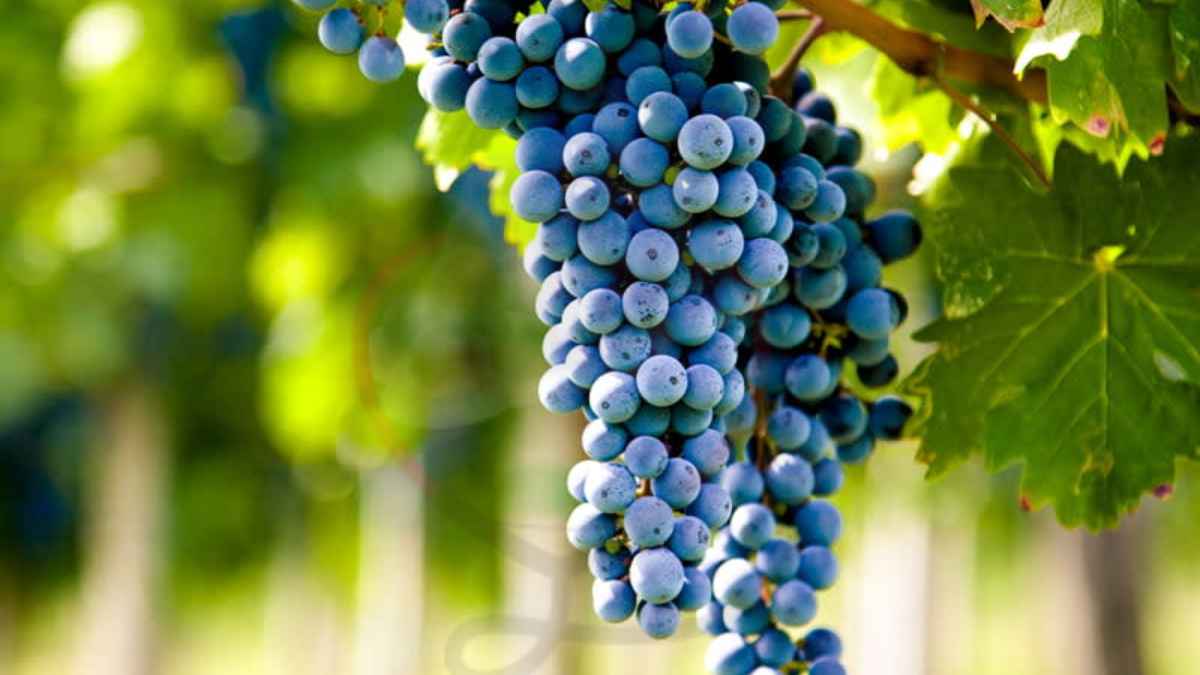
In this article, we’ll delve into the fascinating world of wine grapes, exploring their origins, flavors, and the wines they produce.
Origins of Wine Grapes
The cultivation of wine grapes dates back thousands of years, with evidence of winemaking dating back to ancient civilizations such as the Egyptians, Greeks, and Romans.
The exact origins of wine grapes are believed to be in the regions of Georgia and Iran, where wild grapevines were first domesticated.
Common Types of Wine Grapes
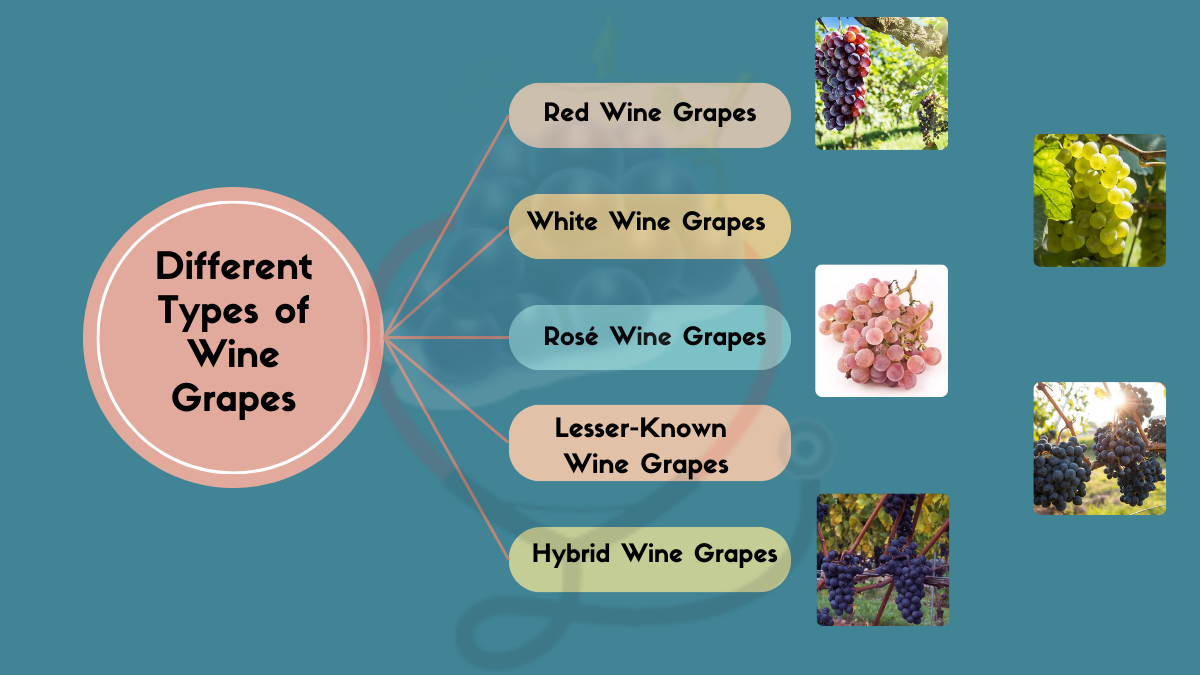
Red Wine Grapes
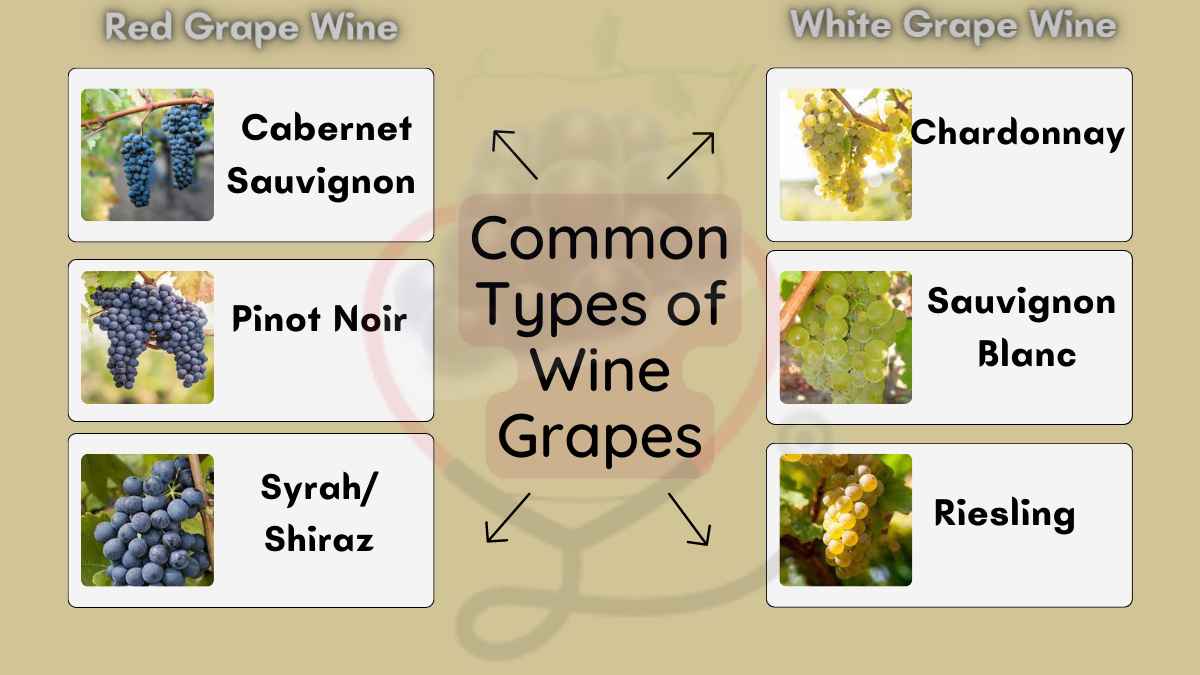
1: Cabernet Sauvignon
Bold and full-bodied, Cabernet Sauvignon is one of the most renowned red wine grapes. [2]
It originated in the Bordeaux region of France and is now grown in many wine-producing regions around the world.
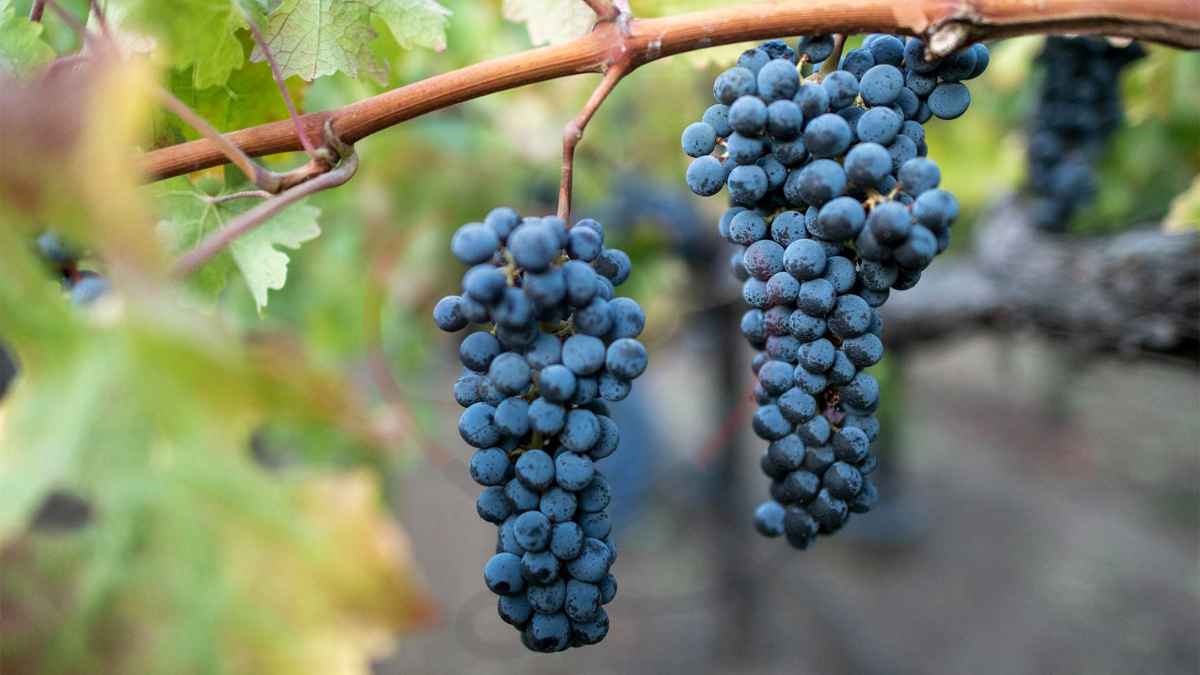
Cabernet Sauvignon wines are known for their dark fruit flavors, firm tannins, and aging potential.
2: Pinot Noir
Pinot Noir, often referred to as the “heartbreak grape,” is a delicate and finicky red wine grape. [3]
Originating in the Burgundy region of France, it produces elegant and aromatic wines with flavors of red berries, cherries, and earthy undertones.
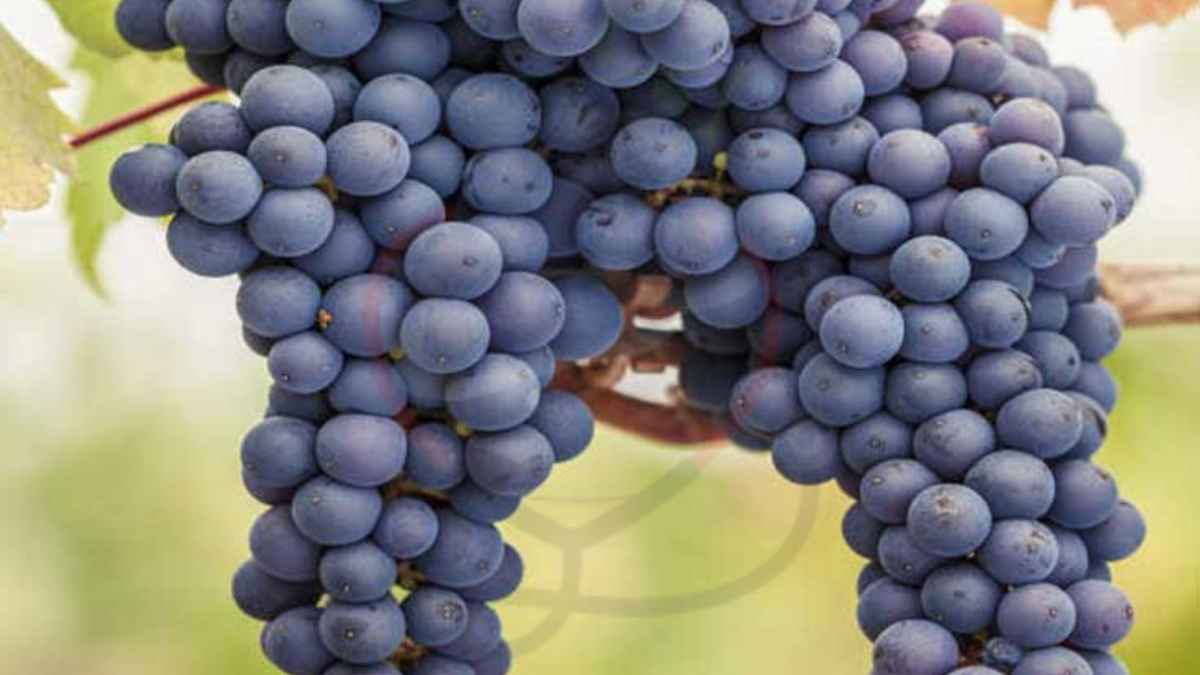
Pinot Noir is highly prized by wine enthusiasts for its complexity and ability to reflect the grape wine.
3: Syrah/Shiraz
Syrah (known as Shiraz in Australia) is a versatile red wine grape that thrives in warm climates. [4]
It produces rich and robust wines with flavors of dark berries, spices, and hints of pepper.
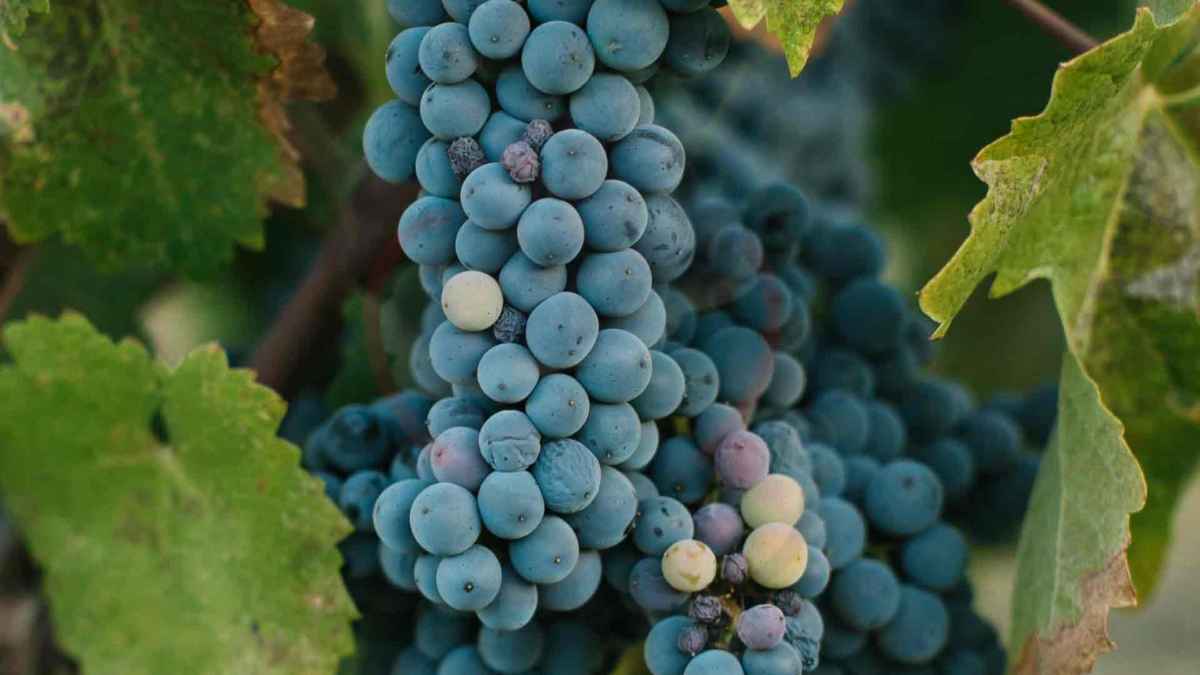
Syrah/Shiraz wines can vary in style, ranging from full-bodied and tannic to more approachable and fruit-forward.
White Wine Grapes
1: Chardonnay
Chardonnay [5] is one of the most widely planted white wine grapes in the world.
It originated in the Burgundy region of France and is now grown in various wine regions globally.
Chardonnay wines can range from crisp and unoaked to rich and buttery, with flavors of green apple, citrus, and vanilla.
2: Sauvignon Blanc
Sauvignon Blanc is a refreshing and aromatic white wine grape that thrives in cooler climates. [6]
It originated in the Bordeaux region of France and is now grown in many wine regions worldwide.
Sauvignon Blanc wines are known for their vibrant acidity, herbaceous aromas, and flavors of tropical fruits, citrus, and grass.
3: Riesling
Riesling is a versatile white wine grape that can produce a wide range of styles, from dry to sweet. [7]
It originated in Germany and is now grown in many cool-climate wine regions.
Riesling wines are highly aromatic, with flavors of peach, apricot, and floral notes.
They often exhibit a distinct minerality and a vibrant acidity.
Rosé Wine Grapes
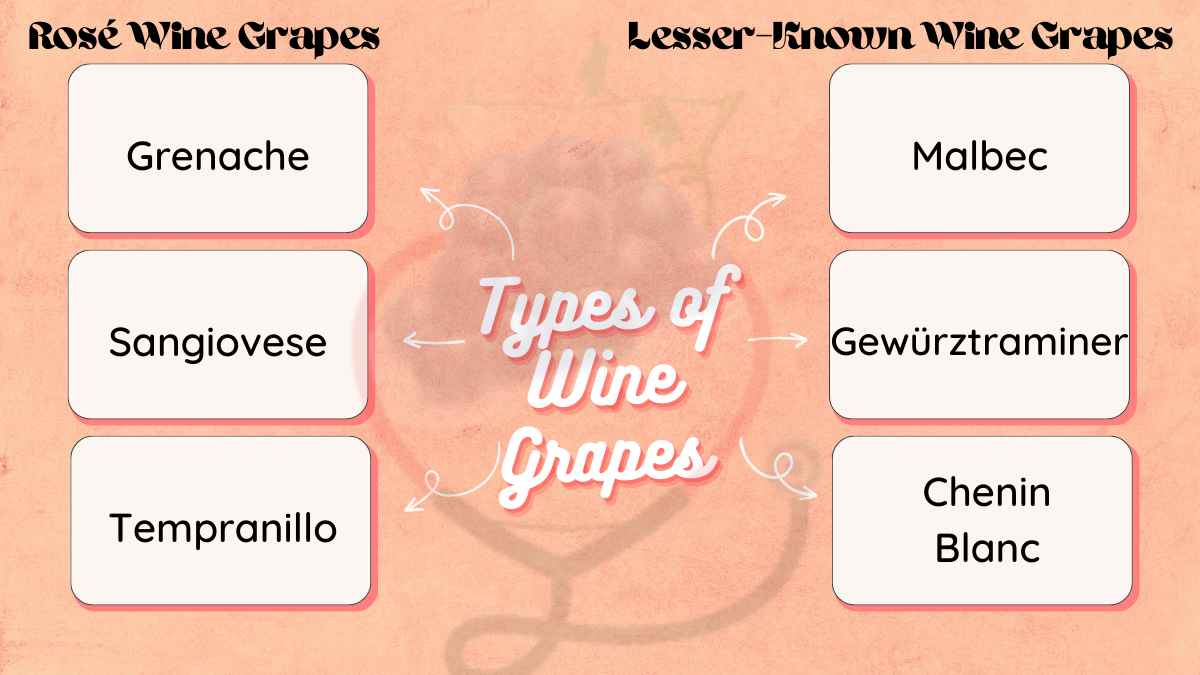
1: Grenache
Grenache is a red wine grape that is also widely used in the production of rosé wines. [8]
It originated in Spain but is now grown in many wine regions around the world.
Grenache-based rosé wines are known for their fruity flavors, lively acidity, and pale pink color.
2: Sangiovese
Sangiovese is an Italian red wine grape primarily used in the production of the famous Chianti wines. [9]
It produces medium-bodied and food-friendly rosé wines with flavors of cherries, red berries, and a touch of spice.
Sangiovese rosé wines are versatile and pair well with a variety of cuisines.
3: Tempranillo
Tempranillo is a Spanish red wine grape that can also be used to produce rosé wines. [10]
It offers a unique flavor profile with notes of red fruit, herbs, and a touch of vanilla.
Tempranillo rosé wines are typically medium-bodied and exhibit a vibrant acidity that makes them refreshing and enjoyable.
Lesser-Known Wine Grapes
1: Malbec
Malbec is a red wine grape originally from France but now most prominently associated with Argentina. [11]
It produces robust and fruit-forward wines with flavors of blackberries, plums, and hints of chocolate.
Malbec wines have gained popularity in recent years for their approachability and smooth tannins.
2: Gewürztraminer
Gewürztraminer is a white wine grape that is known for its highly aromatic and expressive character. [12]
It originated in the Alsace region of France and is also grown in other cool-climate regions.
Gewürztraminer wines exhibit flavors of lychee rose petals, and spices, with a slightly oily texture.
3: Chenin Blanc
Chenin Blanc is a versatile white wine grape that is native to the Loire Valley in France. [13]
It can produce a wide range of styles, from dry to sweet, and sparkling wines.
Chenin Blanc wines often have flavors of green apple, honey, and a hint of minerality.
They are appreciated for their crisp acidity and aging potential.
Hybrid Wine Grapes
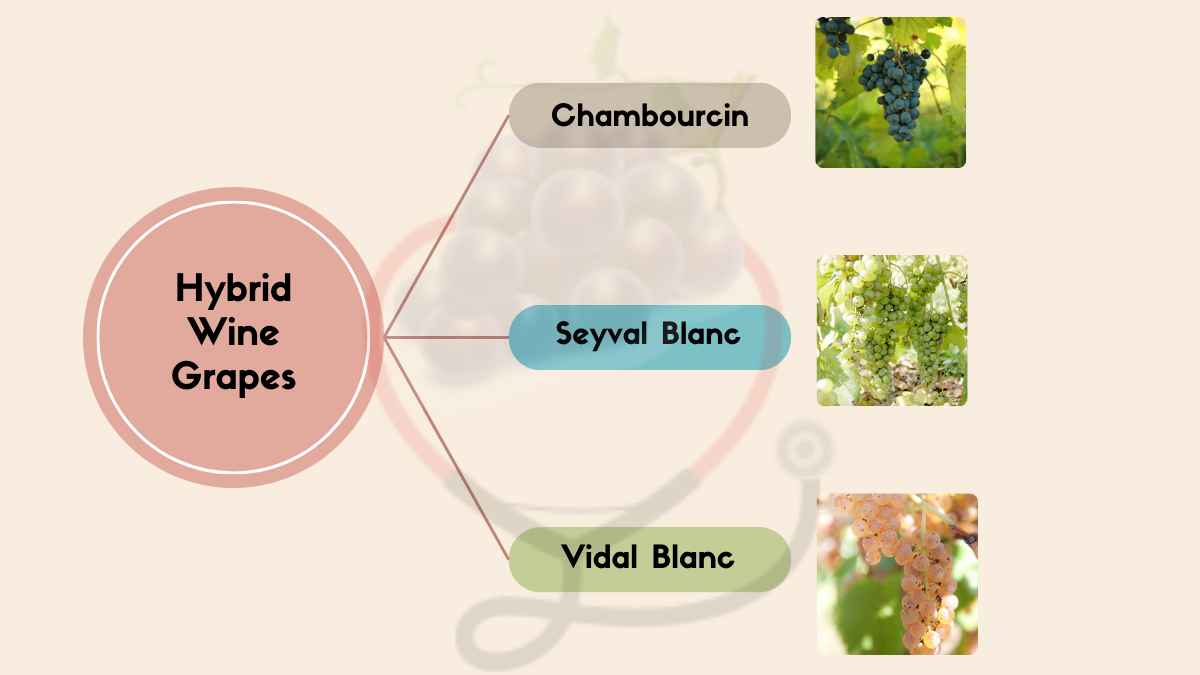
1: Chambourcin
Chambourcin is a hybrid red wine grape that is resistant to many vineyard diseases. [14]
It is commonly grown in cooler-climate regions and produces wines with dark fruit flavors, moderate tannins, and a medium body.
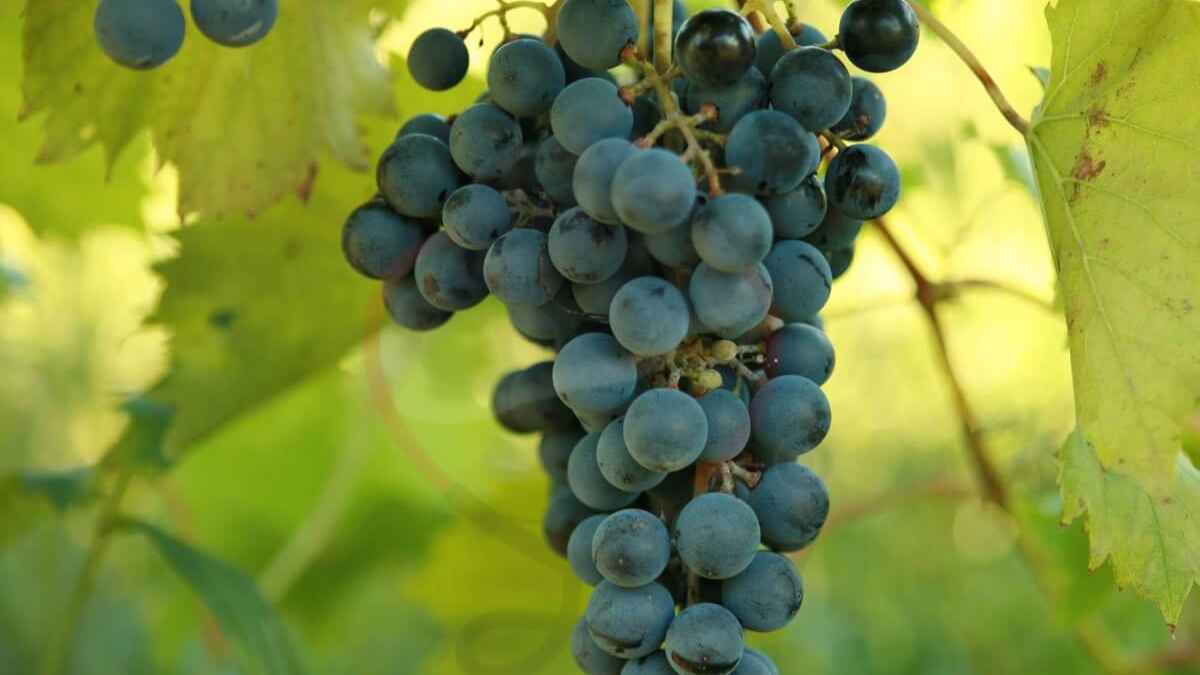
Chambourcin wines often exhibit a pleasant balance between fruitiness and earthiness.
2: Seyval Blanc
Seyval Blanc is a hybrid white wine grape that is well-suited for cooler climates and shorter growing seasons. [15]
It produces crisp and refreshing wines with flavors of citrus, green apple, and floral notes.
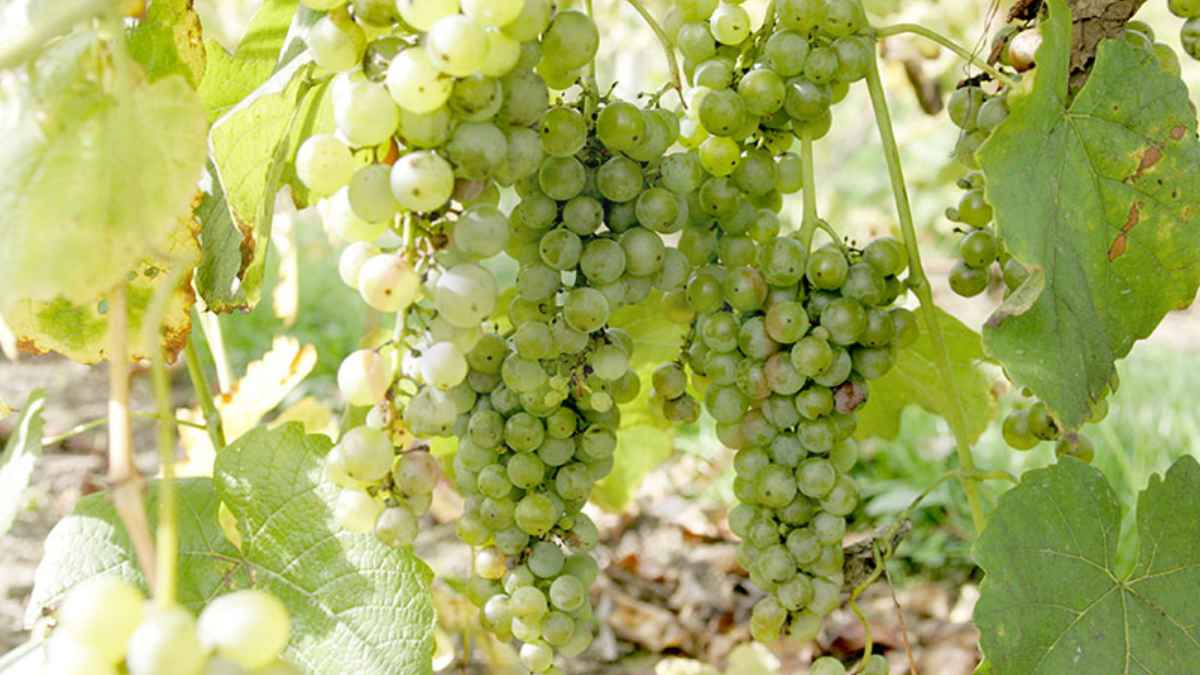
Seyval Blanc wines are often enjoyed as a dry white wine with a bright acidity.
3: Vidal Blanc
Vidal Blanc is another hybrid white wine grape that thrives in cooler climates.
It is known for its ability to withstand frost, making it a popular choice in regions with harsh winters. [16]

Vidal Blanc wines range from dry to sweet, with flavors of tropical fruits, citrus, and honey.
The sweet versions of Vidal Blanc wines are often used for ice wine production.
Wine grapes play a vital role in the world of winemaking, offering a diverse range of flavors, aromas, and characteristics.
From the bold and robust red wines produced from Cabernet Sauvignon to the delicate and aromatic Pinot Noir, each wine grape variety contributes its unique essence to the wines we enjoy.
Exploring the world of wine grapes opens up a realm of possibilities, allowing you to discover your preferred styles and flavors.
Whether you’re a fan of red, white, or rosé wines, there is a wine grape waiting to captivate your taste buds.
So, the next time you uncork a bottle of wine, take a moment to appreciate the journey of the wine grapes that contributed to its creation.
FAQs (Frequently Asked Questions)
Are wine grapes different from regular table grapes?
Yes, wine grapes are specifically cultivated for winemaking purposes. They possess different characteristics, such as a unique balance of sugars, acidity, and flavors, which contribute to the quality and complexity of wines.
Can I grow wine grapes in my backyard?
While it is possible to grow some wine grape varieties in certain regions, it requires specific climate conditions and vineyard expertise. It’s recommended to consult with local experts or vineyard professionals for guidance.
Are all wine grapes used to produce specific types of wine?
No, while certain wine grape varieties are traditionally associated with specific wine styles, winemakers often experiment and blend different grape varieties to create unique wines with distinct characteristics.
Is there health benefits associated with consuming wine grapes?
Wine grapes contain antioxidants and polyphenols, which are believed to have certain health benefits when consumed in moderation.
How do I pair wine grapes with food?
Pairing wine grapes with food is a delightful experience. Generally, red wine grapes pair well with red meat and hearty dishes, white wine grapes complement seafood, poultry, and lighter fare, while rosé wine grapes are versatile and can be enjoyed with a variety of cuisines.
